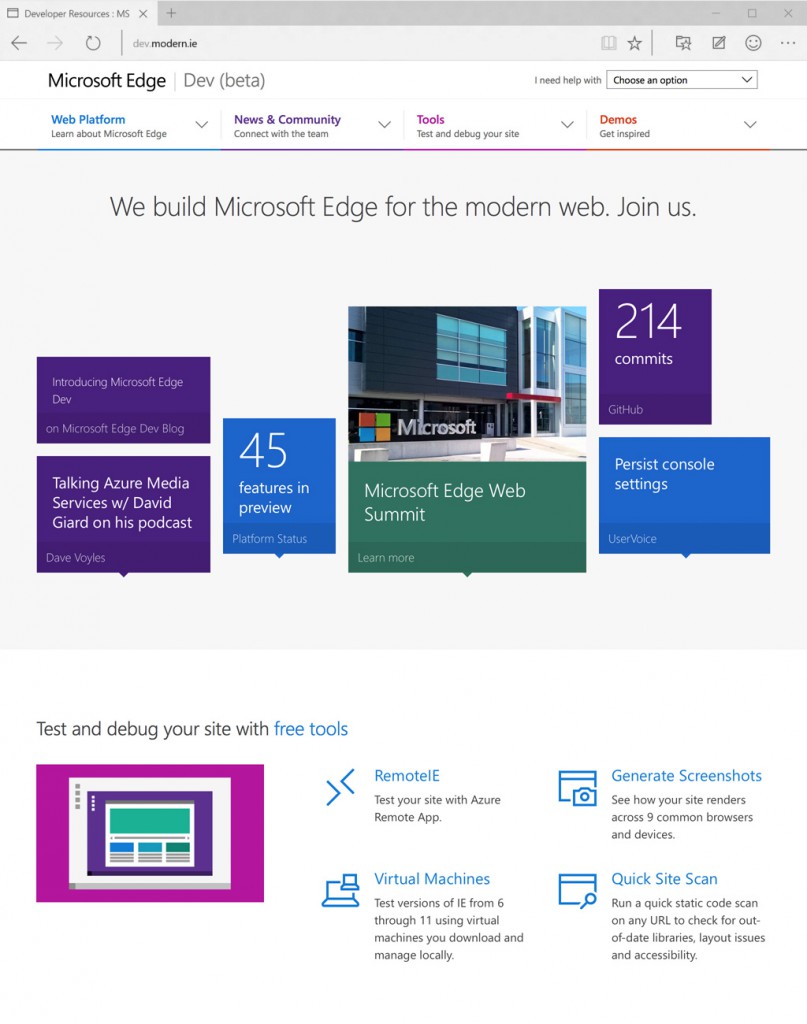Project Spartan has finally a name: Microsoft Edge.
Microsoft Edge will be the official name of the successor to Internet Explorer. Microsoft has recently launched
Microsoft Edge Dev, a new hub for web developers looking to get specific information pertaining to the Edge rendering engine that powers Microsoft Edge. The Microsoft Edge Dev website is currently live from the old dev.modern.ie url, formerly hub to Internet Explorer developers, but that is likely to change as IE gains official legacy status.

There is no word yet on when Project Spartan will mutate into Microsoft Edge, but those who want to be in the loop of development can look up the official checklist at:
http://dev.modern.ie/platform/status/.
How will current websites look in Microsoft Edge?
The difference between Edge and other browsers like Chrome or Firefox will be minimal, however there are considerations to be made in respect to backward compatibility. While Edge’s checklist features some very advanced properties, such as the ability to determine touchscreen-specific events, or battery status information for the current device, other browsers may not support the same standards yet. Fortunately, the checklist on MS Edge Dev’s site shows diagrams with information on browser-specific compatibility, as well as their status within development.
A truly plugin-free experience
Microsoft Edge will most likely be the last nail in the coffin of third-party web plugins. Edge will not only embrace HTML5 completely, but it will also provide for many of the most exciting established W3C web standards, already available, but almost completely unsupported by most engines, with the exception of WebKit, used by Chrome and Safari.
Such support will allow developers to use HTML5 and CSS3 as flexibly as a dynamic drawing canvas, capable of creating the most complex layouts, without having to resort to odd workarounds typical of other browsers affected by the limitations of the standards they support.
A nod to the MacBook’s Force Touch... or a hint about future MS devices?
As we scroll down the list of features being considered for Edge integration, Vibration API caught our attention. According to the description under this particular item, tactile feedback, such as the vibration feedback from the new MacBook’s Force Touch trackpad, could be something that developers could someday integrate in websites. Vibration feedback is currently supported in Chrome, Firefox and Opera. Oddly enough, Safari does not include, yet, support for this feature.
Browser-based gaming
Game developers who already are working on browser-based games using the WebGL extension, will be able to see their creation come to life in Microsoft Edge, for which support of WebGL 2 is under consideration.
Real-time chat between browsers
Exciting developments are part of both Edge and the W3C checklist of standards, still being drafted for future applications, that will allow developers to create bi-directional communication between browsers, which will include text, audio and video as well.
Instant messaging and peer-to-peer video chat capabilities will allow for low-latency communication. Real-world examples include communication sessions for training, support of entertainment purposes that do not require multiple participants.
An eye on privacy
The widely supported Web Crypto API will also be part of MS Edge, and will enable access to cryptographic operations such as password hashing, signature generation and verification, and user authentication.